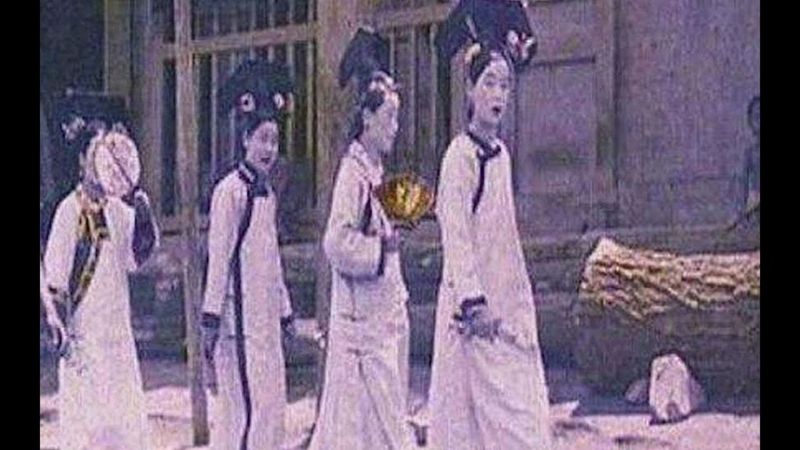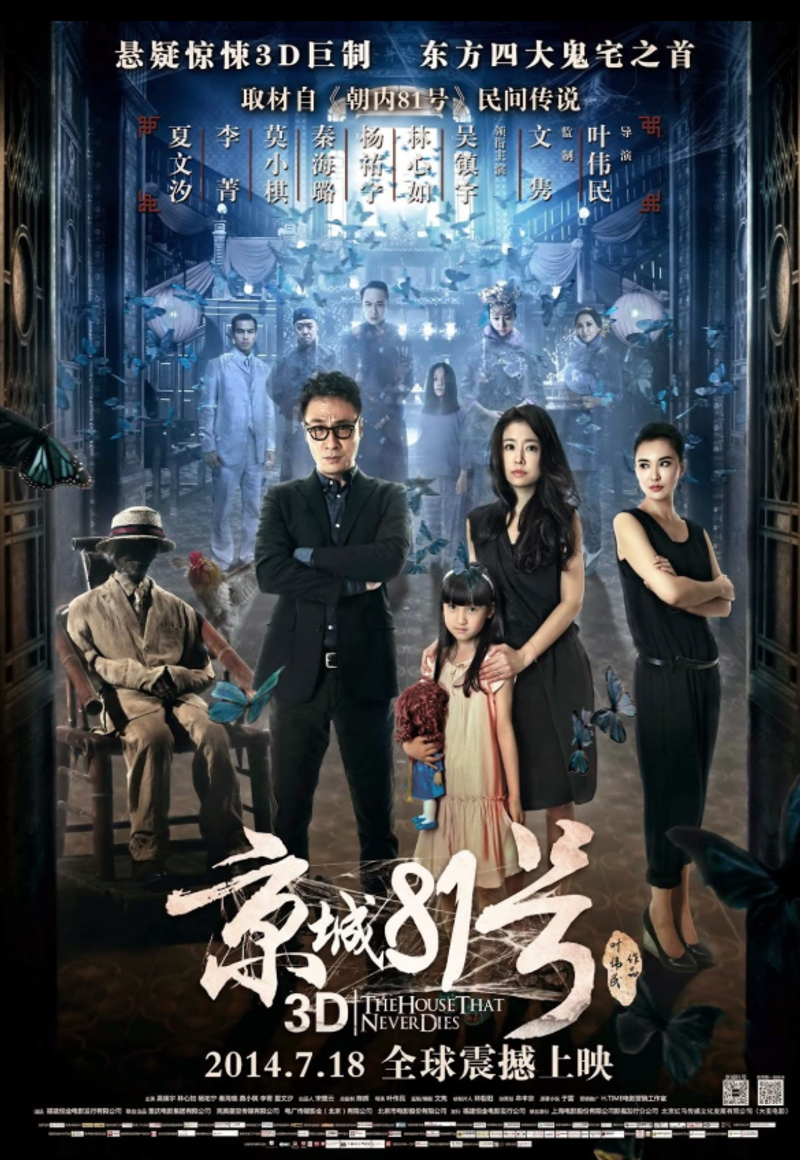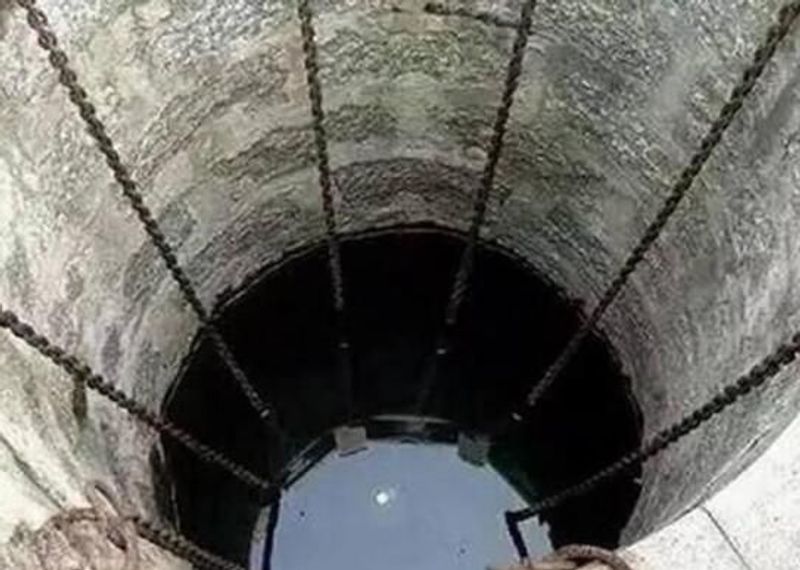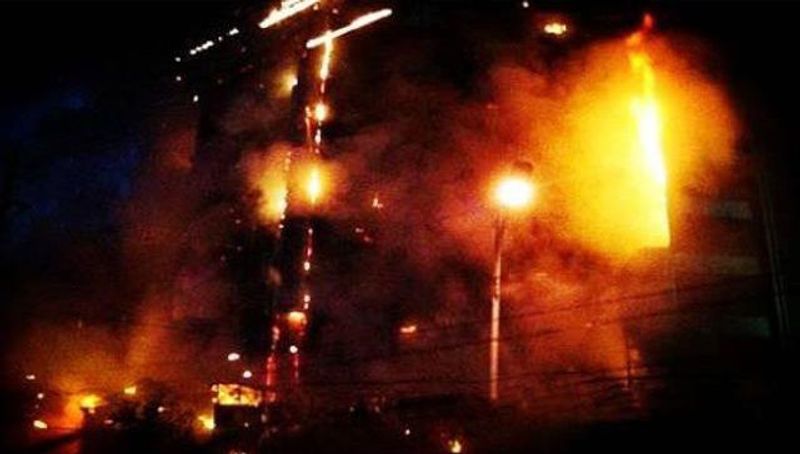icon
password
Multi-select
tags
ID
type
status
slug
summary
category
date
Author
URL
Beijing is the capital of China and has been the capital of five dynasties, with a very long history and cultural heritage. As a result, the urban legends of Beijing have a unique flavor compared to the urban legends of other regions in China. As the times evolved, new urban legends were born into the mix. This gives Beijing's urban legends a fantastical sense of interweaving history and modernity.
Just as overseas friends usually read urban legends from the English-speaking world on Reddit, r/nosleep and r/creepypasta, China also has many online communities dedicated to sharing urban legends, such as Baidu Urban Legends Tieba, Tianya Lotus Ghost Story Forum, etc.
China has a long history. in ancient times due to the limitations of the level of cognition, people have misconceptions about many natural and social phenomena, and these elements are passed down in oral or written form, which is the prototype of some Chinese urban legends.
There are some urban legends that people want to warn the world through some metaphorical content, such as the famous novel Liaozhai Zhiyi of the Qing Dynasty. Other stories started as stories made up by adults to scare the children in the family and keep them safe, and this is quite common worldwide. There are even some stories that are based on real events that have been artistically processed. All of the above forms of stories, after continuous dissemination, as well as the addition of new content, eventually formed China’s many urban legends.
Although China became an atheistic country after 1949, these stories have survived. They, like most urban legends in the world, are not credible, yet they remain a hot topic of conversation for some Chinese.
In a previous article, we told you about 5 of the most well-known urban legends from different regions of China. In fact, the number of urban legends in China far exceeds these, and even the same story can have different variants in different regions.
Today, we will tell you 5 urban legends that are very popular in Beijing.
The Forbidden City’s alien animals and ghostly shadows
Once the imperial palace of both the Ming and Qing dynasties, the Forbidden City in Beijing is one of the world’s largest and best-preserved surviving wooden structures of ancient architecture. It was listed as one of the first national key cultural relics protection units in 1961 and a World Heritage Site in 1987. Today it is also an AAAA tourist attraction in China for visitors to visit and study.
Only part of the Forbidden City is open to the public, and another part is closed to the public. Legend has it that in the mid-20th century, the Forbidden City museum night patrol guards often saw a strange animal, said like a mouse but especially large, said like a pig and run especially fast. Some say it was once the royal family raised in the palace to guard the palace’s sacred beasts, there were several people want to catch one or two, but decades have passed, no one has ever really caught one.
Only part of the Forbidden City is open to the public, and another part is closed to the public. Legend has it that in the mid-20th century, the Forbidden City museum night patrol guards often saw a strange animal, said like a mouse but especially large, said like a pig and run especially fast. Some say it was once the royal family raised in the palace to guard the palace’s sacred beasts, there were several people want to catch one or two, but decades have passed, no one has ever really caught one.
There is also a person who used to watch the door in the Forbidden City, and it is said that that person could hear someone playing music every night. Sometimes you can also see the palace maids and eunuchs from the previous dynasty walking in line. That family’s children are not in good health, the elderly said that because that person was affected by the negative energy, affecting the next generation.
There are even rumors that most areas of the Forbidden City are closed because the concubines and palace maids of the former emperors once died inside and are haunted at night. The Forbidden City closes at 5 p.m. for the same reason.
Additional information:
Beijing was once the capital of five Chinese dynasties, which were the Liao, Jin, Yuan, Ming and Qing Dynasties, with the Forbidden City being the imperial palace of the latter two. Since it used to be a place where the royal family lived and ordinary people could not approach, people were inevitably curious and speculative.
Although the Forbidden City was later opened to the public, it was inevitably boarded by wild animals because it was not repaired at the beginning and was overgrown with weeds. In addition to the poor lighting at the time, it was normal to see things wrong at night. In fact, there are still many cats living in the Forbidden City today, and it has even become one of the signature views of the Forbidden City.

See the phenomenon of the palace maid also has a scientific explanation: because the palace wall is red, containing iron tetroxide, and the lightning may conduct electricity down. If by chance a palace maid passed by, then this time the palace wall is equivalent to the function of the video tape, if later there is lightning coincidentally appear, may be like a video projection, the shadow of the palace maid was recorded.
As for the online circulation of the palace ghosts in the middle of the night garden photos, in fact, is the old photos of the Qing Dynasty coloring synthesis.
As for the matter that most areas are not open to the public, it is actually because the Forbidden City is a cultural heritage and the buildings and the artifacts inside are many years old. These need to be restored and set up for conservation measures before they can be displayed, and today the open area of the Forbidden City has increased from 30% to over 80%.
The Jing Cheng No.81 Residence
The Jing Cheng No.81 Residence, also known as the Chaonei No.81 Residence. It is named because it is located at No. 81 Chaonei Street in Beijing, and is known as the “No. 1 murder house in the capital”.
The residence covers an area of about half the size of a soccer field, with a three-story Western-style building on each side of the courtyard to the east and west. Due to the long period of unoccupancy, the creepers that used to grow around the small building for shade and greenery grew wildly into the windows that were removed from their frames. Through the creepers, people can see the dark space inside the house.
If you’ve ever passed in front of an apartment in the summer, you’ll feel the spreading cold air. The temperature here is several degrees lower than the place 20 meters away. The house is covered with creepers all around, adding to the mysterious atmosphere. In winter, the creepers all dry up and the old house looks like a gloomy old castle.
It is rumored that some years ago, because of the age and dilapidation of No. 81, the government intends to tear down and rebuild, only to have workers disappear for no reason within a few days of the start of construction. Because it was too bizarre, the project was put on hold.
With it a street away from the apartment renovation, renovation workers in the basement construction, inadvertently breakdown a partition wall, and found a secret passage. It was eerie inside, and some of the workmen, lighted by candles, went into the secret passage to investigate it. At that moment a light was seen inside the Number 81, and in a moment it was dark again, and the workmen who had entered the passageway never came out again.
Additional information:
Before 1865, it was numbered 69 and originally belonged to a French Chinese Catholic, Ms. Zhu Derong, whose husband was the then chief engineer of the Ping-Han Railway, Frenchman Pouillya. After their marriage, they bought the house, which was designed and built by Pouillya as a French residence.
Later, it was also leased to the Catholic Sisters of Austin, which opened a clinic. In May 1948, it was sold to an Irishman and became a Catholic church. Its door number was changed to 81 in 1965, after which it changed hands several times, but eventually it was temporarily abandoned due to its age and disrepair.
Around 2005, many young people who are keen on urban adventure came here to explore. They exaggerated and imagined their own experiences and created the rumor that “No. 81 is haunted”. Coupled with the interpretation of some literature, film and television works, people believe it to be true. But in fact, it is all rumors.

In fact it was once the location for many film and television productions, such as the TV series “Never Close Eyes” and the movie “The House That Never Dies“. And the flashes that people see at night are actually film and television companies doing the filming.
In March 2016, the gates of No.81 were closed and restoration work began. Construction was completed in March 2017 and leased to the public at a rent of approximately RMB 10 million per year.
Beixin Qiao and Dragon-locked well
In Beijing there is a place called Beixin Qiao, which means the North new bridge in Chinese. The name is called the bridge, but in fact, there is no bridge and no bridge fin. There is a folklore in it.
It is said that when the Ming dynasty built the capital, two dragons did evil in the capital and broke through the eye of the sea in Beijing – a spring connected to the sea, resulting in a flood. The place where the sea eye is located is the later Beixin Qiao. So Yao Guangxiao, the emperor’s strategist at the time, suppressed the evil dragons at the location of the eye of the sea and stopped the flooding.
The evil dragon asked Yao Guangxiao, “Am I going to be locked up for a thousand years, ten thousand years? When will I get out?”
Yao Guangxiao said, “When this bridge is old and people begin to repair the bridge fin, you will be free.”
Since then, the place is called Beixin Qiao, and the well where the sea eye is located, is called the lock Dragon-locked well.

It is said that someone later tried to pull the chains out of the well to bury them, but after three days of pulling it did not reach the end. It was only when the black water gushed, the fishy smell hit the nose, and the well made a loud noise that people were forced to stop and restore the wellhead to its original state.
The most recent incident related to it was broadcast on the news when Metro Line 5 was built, saying that the subway changed its route so as not to destroy an ancient well in Beixin Qiao.
Additional information:
A geologist has already come here for exploration, and there is an underground dark river under this ancient well. The black water that gushed up was because the iron chain had been immersed in the water for a long time and produced rust. The chain rubs against the walls of the well as it pulls, eventually making the water muddy. The loud sound is also caused by the echo effect of the circular walls.
The long chains are set up by the ancient people to control the water level and prevent the water in the underground dark river from coming up during the flood season and causing trouble.
Not only Beijing, but also many provinces in China, such as Henan and Jilin, have the legend of Dragon-locked well. And the actual use of them is the means taken by the ancient people to prevent and control flooding.
The legend of Yao Guangxiao suppressing the evil dragon is more of an artistic processing of his feat of flood control at that time.
As for the matter of replacing the route of the subway, after all, this ancient well is hundreds of years old, and there is a underground river underneath. For the sake of construction safety and protection of cultural relics, this is no more than a normal choice.
The Fire of Rongfu Temple
Rongfu Temple was built in 1452 and was one of the private temples for chanting and praying during the Ming Dynasty.
By the end of the Qing Dynasty, the temple fair at Longfu Temple had evolved into a purely commercial bazaar, which was held on the first, second, ninth and tenth days of the lunar calendar and was very lively.
In 1901, Longfu Temple suffered a fire and was reduced to ruins. Later, the temple market was rebuilt and business remained quite good.
In the early 1950s, the People’s Square was built here, and in the late 1980s, the People’s Square was demolished and a more upscale commercial building, the Longfu mansion, was built, with Longfu Temple moved to the top floor of the building.

One night in August 1993, a sudden fire broke out in the Longfu Building, and it took dozens of fire engines and more than a thousand firefighters to extinguish the blaze for 8 or 9 hours.
Soon after the fire, Longfu Building resumed its business, but business was slow and never got hot again. 2001 saw the closure of Longfu Building.
It is said that two huge stone turtles were excavated during the construction, one with “gold” and the other with “longevity” engraved on their back. The stone tortoise was dug up and then transported away, and the whereabouts are still unknown.
People privately believe that digging away “the tortoise of gold and the tortoise of longevity” is equivalent to the loss of wealth and luck. And The demolition of the Longfu Temple is tantamount to destroying the “Feng Shui” of the place. After that, there was a fire and business was not as good as before.
Additional information:
At the beginning, Longfu Building was one of the four major shopping malls in Beijing, mainly because it was the first to deal with bicycles and metal products, and people in the city preferred this place to buy bicycles and metal products. There is a complete range of goods, and the price is quite cheap, business is naturally very hot. With this advantage, the place later began to sell clothing, home appliances and other goods.
The fire was at night, so it was not discovered at first, and the merchandise in the building was almost burned to the ground. After reopening, the original merchandise characteristics were not maintained and the competitive advantage was gradually lost.
Just like in most countries in the world, it is considered that the house where a person died is a bad house. A mall that has been on fire seems less “auspicious”, which is one of the reasons why its business has gradually become cold.
The Haunted Building in Jinsong
Around 1984, something big happened near Jinsong in Beijing. It is said that a building there is haunted very seriously, when it is dark, the building can hear very miserable cries, there are ghostly flashes around, and the lights in the building are also bright and dim.
Whenever it’s late at night and the residents are asleep, there is a lot of activity outside the door. There are chatting, moving things, fighting, and scolding children, the sound is very clear. But when people open the door, the sound immediately stopped. It was very scary and strange.
Then the residents moved out one after another, and strangely enough, the house was quiet after the people left. A few families who didn’t find a room moved back in, and the first few days were fine, until one day an old lady came back after a walk. She found a woman standing in front of her house with her hair down, so she called her husband and son’s names while she went to pull the woman.
As a result, the woman turned around, the old lady was stunned. The old lady said the woman turned around and also saw a back with long hair, the old lady was scared for a long time and could not get out of bed, but also became paranoid.
After that, the ghosts here seem to haunt more fierce, and then the residents raised money to invite a geomancer to practice, the ghosts only slowly become less.
Additional information:
The “haunted building” and the “still a back after turning around” are two very standard urban legend templates, and there are similar horror stories around the world.
According to netizens who live in Jinsong, Jinsong is not haunted at all. Jinsong had a total of 4 districts at the earliest, and the so-called ghost building in District 2, around 1984 did have the sound of men and women crying or whispering at night, making it impossible for residents to rest properly. Neighbors then found the comrades of Jinsong police station, so the polices caught a dozen high school students from the haunted building after a search.
At that time, there were basically no foreign tenants in Beijing, and it was still a system of unit allocation, many buildings were empty. So some high school students used those rooms as their party place.
The story of Jinsong ghost house is very likely to be the result of this real event combined with the horror story template.
Beijing is the capital of China and has also been the capital of five dynasties, with a very long history and cultural legacy. So you may notice that, not unlike the five most well-known urban legends in China, many Beijing urban legends have been passed down for many years.
As for the stories that took place in recent times, most of them have real events corresponding. After Chinese Internet users began to access the Internet, new urban legends were formed by combining the events they had been exposed to with various classic legendary templates. And these stories spread in popularity as the number of Internet users increased and became the new talk of the town after tea and dinner.
If you’re interested, perhaps we’ll share more of the distinctive urban legends from around China in the future.
- Author:NotionNext
- URL:https://pandayoo.com/2022/03/17/5-famous-beijing-urban-legends
- Copyright:All articles in this blog, except for special statements, adopt BY-NC-SA agreement. Please indicate the source!